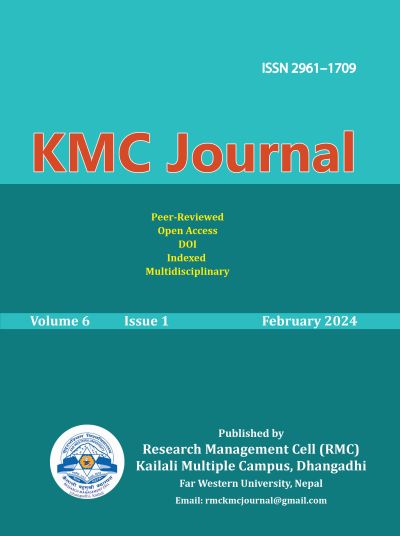Exploring Teaching and Learning Physics in Engineering Institutions of Kathmandu District
DOI:
https://doi.org/10.3126/kmcj.v6i1.62327Keywords:
Diploma in engineering, CTEVT, ethnography, social constructivist epistemology, teacher centric, inquiry-based learningAbstract
Being a physics educator for the last two decades, the first author of this paper observed some disturbing scenarios in the educational landscape of diploma in engineering in physics theory portion. Students' academic achievements in the physics final examination conducted by Council for Technical Education and Vocational Training (CTEVT) indicated that many failed to fulfill the minimum requirements to pass the final exam or gain good grades. In addition, most students could not apply the physics principles in real-world contexts. The purpose of this study was to explore teaching and learning practices in physics theory classrooms of Kathmandu district-based diploma in engineering schools affiliated to CTEVT. The study employed a qualitative research design and was underpinned by the social constructivist learning theory. Ethnography as a research method was employed in which participant observation and unstructured interviews were used as the research tools. A purposeful sampling was carried out to conduct the research in which nine students from two engineering institutions were taken as the research participants. Data analysis was carried out by coding the raw data primarily employing N-vivo coding thus creating several categories and finally developing three major themes. The findings indicated that the classroom dialogue didn’t support the social constructivist epistemology. Thus, the findings lead to the conclusion that traditional teacher-centric practices were prevalent at those engineering institutions that might be responsible for the poor academic achievements of students.
Downloads
Downloads
Published
How to Cite
Issue
Section
License

This work is licensed under a Creative Commons Attribution-NonCommercial 4.0 International License.
This license allows reusers to distribute, remix, adapt, and build upon the material in any medium or format for noncommercial purposes only, and only so long as attribution is given to the creator.




